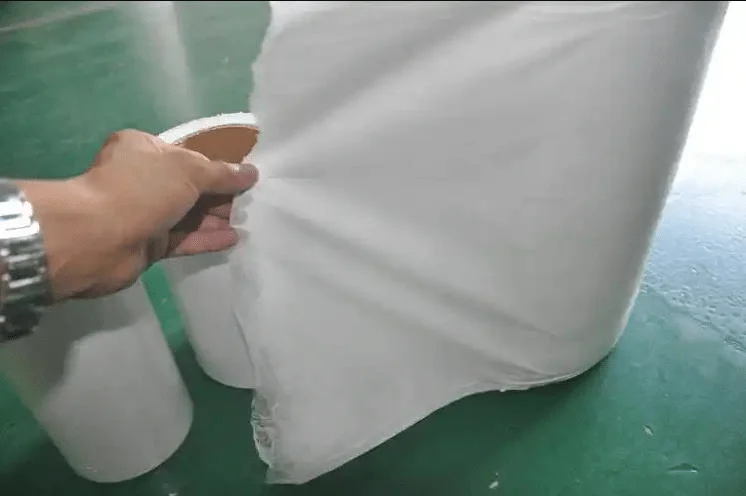Key materials in masks
The three-layer structure of a mask

What exactly is the melt-blown fabric in the masks we are using now? Just cut open the mask and take a closer look, and you will find that the interior of a medical surgical mask is actually ingeniously composed of three layers of structure, which is usually named SMS.
1. The inner layer S, which is the common non-woven fabric, mainly serves the function of moisture absorption.
2. The middle layer M is made of specially treated meltblown fabric, which can effectively filter out bacterial suspended particles and is regarded as the "heart" of medical masks.
3. The outer layer S is a non-woven fabric that has undergone waterproof treatment. Its key function is to block the saliva exhaled by the patient, thereby ensuring the anti-droplet effect.
Why does meltblown fabric have such powerful functions? This is attributed to its unique material and structure.
► Characteristics and functions of meltblown fabric
Meltblown fabric is mainly made of polypropylene, with the fiber diameter controlled between 1 and 5 microns. This fine fiber structure endows it with excellent filtering, shielding and oil absorption properties. In addition, meltblown fabric has many voids, a loose structure and strong anti-wrinkle ability, which makes it play a crucial role in mask production. Not only that, meltblown fabric is widely used in multiple fields, such as isolation materials, absorption materials, mask materials, thermal insulation materials, and oil-absorbing materials, etc.
After being processed by high-pressure filtration efficiency, the masks produced by the manufacturer possess outstanding features such as low resistance and high dust holding capacity.
► Distinguish genuine from fake meltblown fabric
During the epidemic prevention period, the choice of masks is of vital importance. It is necessary to carefully distinguish between genuine and fake melt-blown fabric masks! During special periods, in pursuit of huge profits, some mask manufacturers may use inferior, cheap or substandard raw materials. What's more, some unscrupulous merchants may omit the meltblown fabric filter layer and replace it with ordinary non-woven fabric, thus failing to effectively filter out viruses and potentially posing a threat to the health of the wearer.
So, how can we determine whether the meltblown fabric in medical masks is genuine and reliable? The key lies in the structure of the mask and the appearance of the melt-blown fabric. Medical masks are usually composed of three layers: spunbond non-woven fabric on both sides and meltblown fabric in the middle. High-quality meltblown fabric is white and opaque, showing a significant difference from the non-woven fabric on both sides, and visually resembles paper. If the meltblown fabric appears thin and has no obvious difference from the non-woven fabric on both sides, its filtration effect may be poor.
In addition, there is a simple identification method for reference:
1. When exposed to fire, the meltblown layer will soften but not burn. If the meltblown layer can burn, it is not true meltblown fabric.
2. High-quality meltblown layers carry static electricity. When torn into thin strips, the force of static electricity adsorption can be clearly felt. The quality of this meltblown fabric is usually good.


 10-Sep--2025
10-Sep--2025